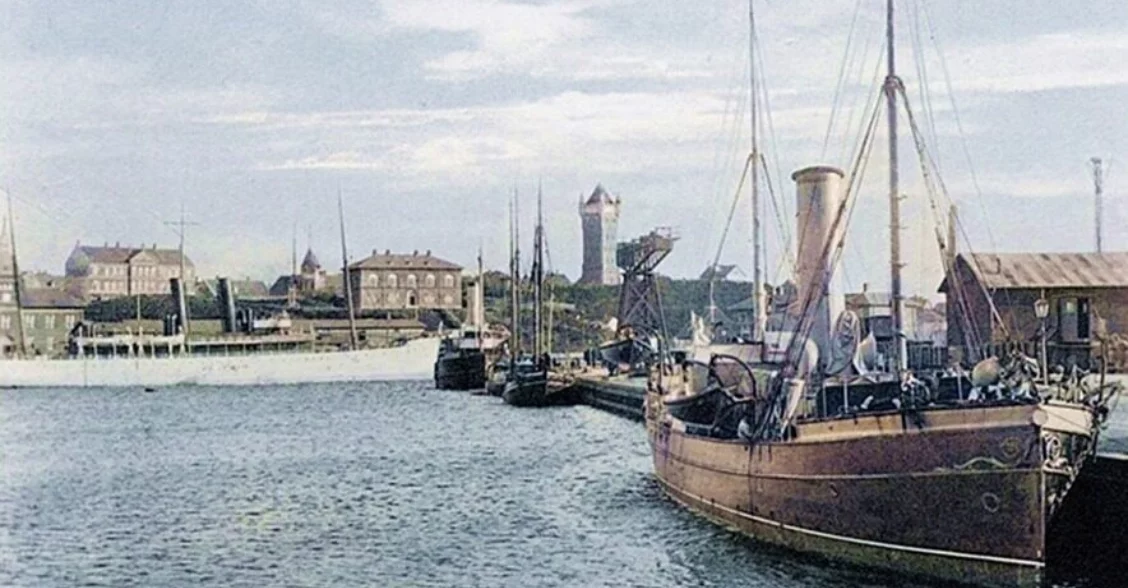History
Since 1874, the Port of Esbjerg has been the main centre for sea carriage and trade between Denmark and the rest of the world. Today, the Port of Esbjerg is an international, multimodal transport centre and an important Scandinavian gateway to the whole world. More than 200 companies are located at the port, and 10,000 people work here.
It was decided to build the Port of Esbjerg in 1868, after Denmark had lost the Port of Altona as a result of the defeat by Prussia in the 2nd Danish-Prussian War. Because of the loss of the Port of Altona, Denmark was in need of new port to the west.
From the beginning, the trade with England was an important business area for the Port of Esbjerg. Today, the port is connected to all of Europe via a ramified network of shipping routes.
From fishing to energy
For many years, the Port of Esbjerg was used for fishing, and in 1970, it was the largest fishing port in Denmark and home port to about 600 fishing boats.
Later, the fishing industry went through a structural change, and many of the individual fishermen were replaced by bigger players.
From around 2000, this change meant that many of the smaller fishing companies moved away from the city, and today, there are only a few trawlers left in Esbjerg. They primarily fish for crabs, mussels and shrimps.
In 2000, Esbjerg had already established its position as the Danish capital of oil and gas. The Danish Underground Consortium (DUC) discovered the first traces of oil in the North Sea in 1966, and in 1971,
the first oil was extracted from the Dan Field in the North Sea.
The offshore industry flourished in the North Sea, and several big oil and gas companies were established in Esbjerg, which is still the primary base for the Danish oil and gas industry.
Around the millennium, a new business area emerged: offshore wind power. A number of companies in Esbjerg contributed when the first large-scale offshore wind farm in Denmark, Horns Rev I, was built in
the North Sea in 2002.
Since then, the offshore wind industry has gone through a rapid development, and today, the Port of Esbjerg is the leading port in Europe in terms of handling and shipping out wind power.
More than 4/5 of the current amount of offshore wind capacity installed in Europe was shipped out from the Port of Esbjerg.
Moreover, the Port of Esbjerg is the leading RoRo port in Denmark. More than 4.5 million tonnes of cargo pass through the port each year, and the port is also Denmark’s leading port in terms of car imports.
Change in ownership and new investments
In 2000, the Port of Esbjerg went from being state-owned to a public self-governing port owned by the Municipality of Esbjerg.
From 2003 to 2014, the Port of Esbjerg invested around one billion DKK in new areas and port facilities to meet the demands from the offshore industry and pave the way for future growth.
In 2013, a new area, the Eastern Port, opened, covering 650,000 m2. It has primarily been used for pre-assembling, testing and shipping out wind turbines. Since then, the Eastern Port has been expanded several times, and now covers an area of one million square meters.
Today, the Port of Esbjerg covers an area of 4.5 million m2 in total, which makes it the largest port in Denmark.

